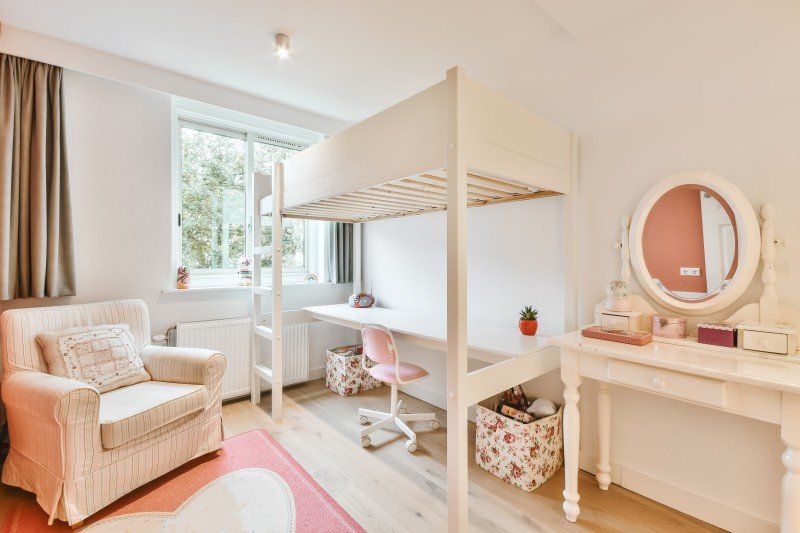15 Things You Don't Know About Kids Bunk Bed
The Ultimate Guide to Kids Bunk Beds: Maximizing Space and Fun
With the increase of vertical living and smaller sized spaces, the appeal of bunk beds has actually skyrocketed among households. Bunk beds not only offer a practical sleeping service, particularly in shared spaces, however they likewise bring an element of enjoyable into a kid's life. Childrens Bunk Beds rebecademauri.top detailed guide looks into the functions, benefits, and considerations of kids' bunk beds, making it easier for moms and dads to select the ideal bed for their kids.
Functions of Kids Bunk Beds
Bunk beds are versatile pieces of furniture that serve more than a single purpose. Here are some essential functions to consider:
Feature
Description
Product
Bunk beds can be built from wood, metal, or a combination of both, using differing levels of sturdiness and design alternatives.
Security Features
Most bunk beds come equipped with guardrails, protected ladders, and capped assistances for safety, specifically essential for children.
Style Variety
Options range from traditional styles to modern styles, ensuring a match for any space design.
Space-Efficiency
Bunk beds utilize vertical space, making them ideal for smaller rooms.
Convertible Options
Some designs can be transformed into two different beds, offering versatility as children grow.
Storage Solutions
Some bunk beds include integrated storage drawers or shelves, assisting to keep the space arranged.
Advantages of Kids Bunk Beds
Buying a bunk bed includes numerous advantages:
- Space Saving: Bunk beds maximize floor space, enabling more play area or storage options.
- Fun Factor: With a bunk bed, kids belong that fosters imagination and companionship during slumber parties or playdates.
- Affordable: Instead of purchasing 2 separate beds, a bunk bed can accommodate two children simultaneously, saving cash in the long run.
- Adaptability: Many bunk beds can be dismantled or transformed into twin beds, making them a long-term investment as children's needs alter.
- Social Interaction: Bunk beds encourage family bonding and relationships, supplying a welcoming space for children to share stories and laughter.
Factors to consider When Choosing a Kids Bunk Bed
When choosing the best bunk bed for a kid, parents need to take into consideration various factors:
- Safety Standards: Ensure that the bunk bed complies with safety regulations and includes vital security functions.
- Age Appropriateness: Different models accommodate different age. For instance, traditional bunk beds may not appropriate for more youthful children.
- Room Dimensions: Measure the bed room to ensure the bunk bed fits appropriately, enabling space to move around easily.
- Weight Capacity: Consider the weight load of each bed and guarantee it accommodates the kid's weight conveniently.
- Style Preferences: Letting children take part in the selection procedure can assist them feel more ecstatic about their new bed.
Types of Kids Bunk Beds
Bunk beds are available in different designs and configurations to match various needs:
Type
Description
Standard Bunk Bed
A traditional style with one bed stacked on top of another, generally using a ladder to access the leading bunk.
L-Shaped Bunk Bed
Functions 2 bunk beds connected in an L-shape, typically more spacious and appropriate for kids sharing a space however needing a bit more space.
Triple Bunk Bed
Makes up 3 stacked beds, perfect for making the most of sleeping arrangements in extremely limited spaces.
Loft Bed
A raised bed with space underneath that can serve as a backyard, research study corner, or extra storage.
Futon Bunk Bed
Integrates a bunk bed on the top with a futon or sofa beneath, making it great for sleepovers and maximizing space usage.
Convertible Bunk Bed
Can be separated into two private beds, offering versatility as children's needs change.
Caring for Kids Bunk Beds
Preserving bunk beds is important for guaranteeing longevity and safety. Here are some basic care practices:
- Regular Inspections: Check the bed routinely for loose screws and tightened bolts to make sure stability.
- Tidiness: Keep bed linen clean and fresh, turning bed mattress for even use.
- Guardrails: Ensure guardrails are protected and in place, particularly if children tend to walk around a lot in their sleep.
- Air Circulation: Ensure the bed has sufficient air flow, avoiding moisture accumulation that can result in mold or mildew.
Frequently Asked Questions About Kids Bunk Beds
Q1: At what age can a child safely use a bunk bed?
A1: Generally, kids aged six and older are considered safe to use the upper bunk due to the height and stability factors included.
Q2: Can I position a bunk bed near a window?
A2: It is suggested to prevent positioning a bunk bed near windows to minimize the risk of falling or injuries.
Q3: Are bunk beds safe for younger kids?
A3: While some contemporary bunk beds include safety functions accommodating more youthful children, it is usually recommended to wait until they are older, normally over six years.
Q4: What is the common weight limitation for leading bunks?
A4: Weight limitations vary by design but usually vary from 150 to 250 pounds. Constantly describe the producer's specifications.
Q5: How often should I examine the bunk bed's safety functions?
A5: It is suggested to perform a security check every few months or whenever you notice any signs of wear.
Kids' bunk beds act as a strategic solution for families wanting to maximize space while providing an enjoyable and appealing sleeping environment for their children. With a range of alternatives readily available— from basic styles to loft beds— parents have the freedom to select something that fulfills their family's particular needs. By considering crucial aspects such as security, room suitability, and their kids's preferences, moms and dads can make an educated option, ensuring that each child is excited about bedtime while benefiting from an efficient room.
